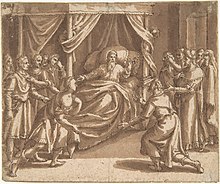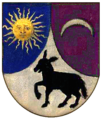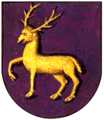
The Kingdom of Israel, or the Kingdom of Samaria, was an Israelite kingdom in the Southern Levant during the Iron Age, whose beginnings can be dated back to the first half of the 10th century BCE. The kingdom controlled the areas of Samaria, Galilee and parts of Transjordan. The regions of Samaria and Galilee underwent a period with large number of settlements during the 10th century BCE, with the capital in Shechem, and then in Tirzah. The kingdom was ruled by the Omride dynasty in the 9th century BCE, whose political center was the city of Samaria.

According to the Hebrew Bible, the Tribe of Ephraim was one of the tribes of Israel. The Tribe of Manasseh together with Ephraim formed the House of Joseph. It is one of the ten lost tribes. The etymology of the name is disputed.

According to the Hebrew Bible, the Tribe of Manasseh was one of the Tribes of Israel. It is one of the ten lost tribes. Together with the Tribe of Ephraim, Manasseh also formed the House of Joseph.

The Tribe of Joseph is one of the Tribes of Israel in biblical tradition. Since the tribes of Ephraim and Manasseh together traditionally constituted the "tribe of Joseph", it was often not listed as one of the tribes, in favour of Ephraim and Manasseh being listed in its place; consequently it was often termed the House of Joseph, to avoid the use of the term tribe. Even though Ephraim and Manasseh were Joseph’s sons, they were considered heads of two of the twelve tribes of Israel because Joseph’s father, Jacob, adopted Ephraim and Manasseh as his own sons.

The Testaments of the Twelve Patriarchs is a constituent of the apocryphal scriptures connected with the Bible. It is believed to be a pseudepigraphical work of the dying commands of the twelve sons of Jacob. It is part of the Oskan Armenian Orthodox Bible of 1666. Fragments of similar writings were found at Qumran, but opinions are divided as to whether these are the same texts. It is generally considered apocalyptic literature.
The Blessing of Moses is the name given to a prophetic poem that appears in Deuteronomy 33:2–27, where it is presented as a blessing of the Tribes of Israel by Moses. The poem thus shares its theme with the Blessing of Jacob. The Blessing of Moses contains few blessings, most of the verses describing the condition of the tribes at a later time.
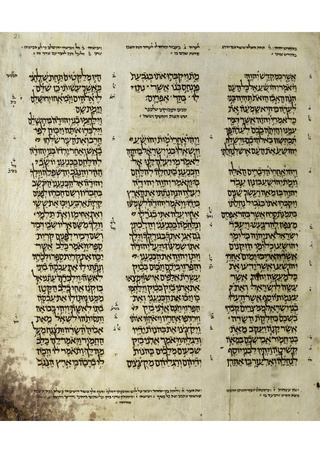
Judges 1 is the first chapter of the Book of Judges, the seventh book of the Hebrew Bible or Old Testament, a sacred text in Judaism and Christianity. With the exception of the first verse, scholars have long recognised and studied the parallels between chapter 1 of Judges and chapters 13 to 19 in the preceding Book of Joshua. Both provide similar accounts of the purported conquest of Canaan by the ancient Israelites. Judges 1 and Joshua 15–19 present two accounts of a slow, gradual, and only partial conquest by individual Israelite tribes, marred by defeats, in stark contrast with the 10th and 11th chapters of the Book of Joshua, which portray a swift and complete victory of a united Israelite army under the command of Joshua.

The Ten Lost Tribes were the ten of the Twelve Tribes of Israel that were said to have been exiled from the Kingdom of Israel after its conquest by the Neo-Assyrian Empire c. 722 BCE. These are the tribes of Reuben, Simeon, Dan, Naphtali, Gad, Asher, Issachar, Zebulun, Manasseh, and Ephraim---all but Judah, Benjamin, and some members of the priestly Tribe of Levi, which did not have its own territory. However, since the tribe of Simeon lived well within the territory of Judah, it is not clear why this tribe was never included in this list. Also, the tribes of Asher and Reuben were never mentioned as participating in anything after the conquest, living in either Phoenician (Asher) or Moabite (Reuben) controlled territory. By the middle 9th century BCE the territory of Gad was also (re)taken by the Moabites, so the Assyrians could at most have removed the other six tribes. Thus, the "10 tribes" appears to be a misnomer, meaning all of the Israelites that were living outside the Kingdom of Judah. The Jewish historian Josephus wrote that "there are but two tribes in Asia and Europe subject to the Romans, while the ten tribes are beyond Euphrates till now, and are an immense multitude, and not to be estimated by numbers".

The Assyrian captivity, also called the Assyrian exile, is the period in the history of ancient Israel and Judah during which several thousand Israelites from the Kingdom of Israel were dispossessed and forcibly relocated by the Neo-Assyrian Empire. One of many instances attesting Assyrian resettlement policy, this mass deportation of the Israelite nation began immediately after the Assyrian conquest of Israel, which was overseen by the Assyrian kings Tiglath-Pileser III and Shalmaneser V. The later Assyrian kings Sargon II and Sennacherib also managed to subjugate the Israelites in the neighbouring Kingdom of Judah following the Assyrian siege of Jerusalem in 701 BCE, but were unable to annex their territory outright. The Assyrian captivity's victims are known as the Ten Lost Tribes, and Judah was left as the sole Israelite kingdom until the Babylonian siege of Jerusalem in 587 BCE, which resulted in the Babylonian captivity of the Jewish people. Not all of Israel's populace was deported by the Assyrians; those who were not expelled from the former kingdom's territory eventually became known as the Samaritan people.
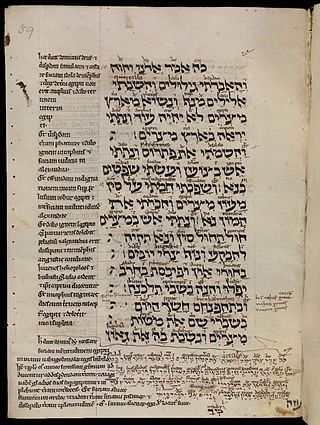
Ezekiel 48 is the forty-eighth chapter of the Book of Ezekiel in the Hebrew Bible or the Old Testament of the Christian Bible. This book contains the prophecies attributed to the prophet/priest Ezekiel, and is one of the Books of the Prophets. Chapters 40-48 give the ideal picture of a new temple. The Jerusalem Bible refers to this section as "the Torah of Ezekiel".
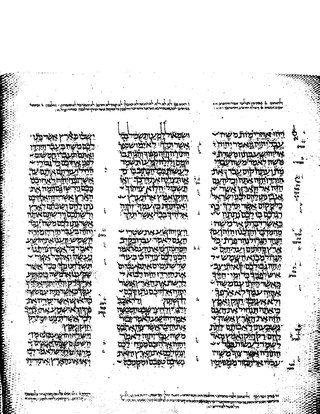
Joshua 18 is the eighteenth chapter of the Book of Joshua in the Hebrew Bible or in the Old Testament of the Christian Bible. According to Jewish tradition the book was attributed to the Joshua, with additions by the high priests Eleazar and Phinehas, but modern scholars view it as part of the Deuteronomistic History, which spans the books of Deuteronomy to 2 Kings, attributed to nationalistic and devotedly Yahwistic writers during the time of the reformer Judean king Josiah in 7th century BCE. This chapter records the further allotment of land for the tribes of Israel, especially the tribe of Benjamin, a part of a section comprising Joshua 13:1–21:45 about the Israelites allotting the land of Canaan.

Joshua 19 is the nineteenth chapter of the Book of Joshua in the Hebrew Bible or in the Old Testament of the Christian Bible. According to Jewish tradition the book was attributed to the Joshua, with additions by the high priests Eleazar and Phinehas, but modern scholars view it as part of the Deuteronomistic History, which spans the books of Deuteronomy to 2 Kings, attributed to nationalistic and devotedly Yahwistic writers during the time of the reformer Judean king Josiah in the 7th century BCE. This chapter records the further allotment of land for the tribes of Israel, especially the tribes of Simeon, Zebulun, Issachar, Asher, Naphtali and Dan, as well as Joshua's Inheritance, a part of a section comprising Joshua 13:1–21:45 about the Israelites allotting the land of Canaan.

Joshua 21 is the twenty-first chapter of the Book of Joshua in the Hebrew Bible or in the Old Testament of the Christian Bible. According to 0Jewish tradition the book was attributed to the Joshua, with additions by the high priests Eleazar and Phinehas, but modern scholars view it as part of the Deuteronomistic History, which spans the books of Deuteronomy to 2 Kings, attributed to nationalistic and devotedly Yahwistic writers during the time of the reformer Judean king Josiah in 7th century BCE. This chapter records the designation of "Levitical cities", a part of a section comprising Joshua 13:1–21:45 about the Israelites allotting the land of Canaan.

According to the Hebrew Bible, the Tribe of Issachar was one of the twelve tribes of Israel and one of the ten lost tribes. In Jewish tradition, the descendants of Issachar were seen as being dominated by religious scholars and influential in proselytism. The sons of Issachar, ancestors of the tribe, were Tola, Phuvah, Job and Shimron.

According to the Hebrew Bible, the Tribe of Zebulun was one of the twelve tribes of Israel. Following the completion of the conquest of Canaan by the Israelite tribes in the Book of Joshua, Joshua allocated the land among the twelve tribes. The territory Zebulun was allocated was at the southern end of the Galilee, with its eastern border being the Sea of Galilee, the western border being the Mediterranean Sea, the south being bordered by the Tribe of Issachar, and the north by Asher on the western side and Naphtali on the eastern.

According to the Bible, the Tribe of Gad was one of the Twelve Tribes of Israel who, after the Exodus from Egypt, settled on the eastern side of the Jordan River. It is one of the ten lost tribes. The Tribe of Gad still originated from the original Hebrew Israelites.

The Tribe of Naphtali was one of the northernmost of the twelve tribes of Israel. It is one of the ten lost tribes.




